Identification of siRNA delivery enhancers by a chemical library screen
- PMID: 26220182
- PMCID: PMC4652771
- DOI: 10.1093/nar/gkv762
Identification of siRNA delivery enhancers by a chemical library screen
Abstract
Most delivery systems for small interfering RNA therapeutics depend on endocytosis and release from endo-lysosomal compartments. One approach to improve delivery is to identify small molecules enhancing these steps. It is unclear to what extent such enhancers can be universally applied to different delivery systems and cell types. Here, we performed a compound library screen on two well-established siRNA delivery systems, lipid nanoparticles and cholesterol conjugated-siRNAs. We identified fifty-one enhancers improving gene silencing 2-5 fold. Strikingly, most enhancers displayed specificity for one delivery system only. By a combination of quantitative fluorescence and electron microscopy we found that the enhancers substantially differed in their mechanism of action, increasing either endocytic uptake or release of siRNAs from endosomes. Furthermore, they acted either on the delivery system itself or the cell, by modulating the endocytic system via distinct mechanisms. Interestingly, several compounds displayed activity on different cell types. As proof of principle, we showed that one compound enhanced siRNA delivery in primary endothelial cells in vitro and in the endocardium in the mouse heart. This study suggests that a pharmacological approach can improve the delivery of siRNAs in a system-specific fashion, by exploiting distinct mechanisms and acting upon multiple cell types.
© The Author(s) 2015. Published by Oxford University Press on behalf of Nucleic Acids Research.
Figures
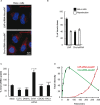

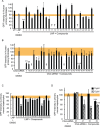
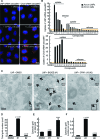
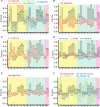

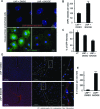
Similar articles
-
L-Type Calcium Channel Blocker Enhances Cellular Delivery and Gene Silencing Potency of Cell-Penetrating Asymmetric siRNAs.Mol Pharm. 2020 Mar 2;17(3):777-786. doi: 10.1021/acs.molpharmaceut.9b00942. Epub 2020 Feb 10. Mol Pharm. 2020. PMID: 31976668
-
Targeted in vivo delivery of siRNA and an endosome-releasing agent to hepatocytes.Methods Mol Biol. 2015;1218:163-86. doi: 10.1007/978-1-4939-1538-5_10. Methods Mol Biol. 2015. PMID: 25319651
-
Lipid-based nanoparticles for siRNA delivery in cancer therapy: paradigms and challenges.Acc Chem Res. 2012 Jul 17;45(7):1163-71. doi: 10.1021/ar300048p. Epub 2012 May 8. Acc Chem Res. 2012. PMID: 22568781
-
Physicochemical characterization techniques for lipid based delivery systems for siRNA.Int J Pharm. 2012 May 1;427(1):35-57. doi: 10.1016/j.ijpharm.2011.09.032. Epub 2011 Sep 29. Int J Pharm. 2012. PMID: 21979250 Review.
-
Nonviral in vivo delivery of therapeutic small interfering RNAs.Curr Opin Mol Ther. 2007 Aug;9(4):345-52. Curr Opin Mol Ther. 2007. PMID: 17694447 Review.
Cited by
-
Endosomal Escape and Nuclear Localization: Critical Barriers for Therapeutic Nucleic Acids.Molecules. 2024 Dec 19;29(24):5997. doi: 10.3390/molecules29245997. Molecules. 2024. PMID: 39770086 Free PMC article. Review.
-
Toward understanding lipid reorganization in RNA lipid nanoparticles in acidic environments.Proc Natl Acad Sci U S A. 2024 Nov 5;121(45):e2404555121. doi: 10.1073/pnas.2404555121. Epub 2024 Oct 30. Proc Natl Acad Sci U S A. 2024. PMID: 39475644 Free PMC article.
-
Lipid nanoparticles for targeted siRNA delivery - going from bench to bedside.Int J Nanomedicine. 2016 Jul 5;11:3077-86. doi: 10.2147/IJN.S106625. eCollection 2016. Int J Nanomedicine. 2016. PMID: 27462152 Free PMC article. Review.
-
Nucleic acid amphiphiles: Synthesis, properties, and applications.Mol Ther Nucleic Acids. 2023 Jun 3;33:144-163. doi: 10.1016/j.omtn.2023.05.022. eCollection 2023 Sep 12. Mol Ther Nucleic Acids. 2023. PMID: 37456777 Free PMC article. Review.
-
Cholesterol-Containing Nuclease-Resistant siRNA Accumulates in Tumors in a Carrier-free Mode and Silences MDR1 Gene.Mol Ther Nucleic Acids. 2017 Mar 17;6:209-220. doi: 10.1016/j.omtn.2016.12.011. Epub 2017 Jan 3. Mol Ther Nucleic Acids. 2017. PMID: 28325287 Free PMC article.
References
-
- Buyens K., De Smedt S.C., Braeckmans K., Demeester J., Peeters L., van Grunsven L.A., de Mollerat du Jeu X., Sawant R., Torchilin V., Farkasova K., et al. Liposome based systems for systemic siRNA delivery: stability in blood sets the requirements for optimal carrier design. J. Control. Release. 2012;158:362–370. - PubMed
-
- Lopez-Davila V., Seifalian A.M., Loizidou M. Organic nanocarriers for cancer drug delivery. Curr. Opin. Pharmacol. 2012;12:414–419. - PubMed
-
- Nair J., Willoughby J., Chan A., Charisse K., Alam R.M., Wang Q., Hoekstra M., Kandasamy P., Kel'in A.V., Milstein S., et al. Multivalent N-Acetylgalactosamine-Conjugated siRNA Localizes in Hepatocytes and Elicits Robust RNAi-mediated Gene Silencing. J. Am. Chem. Soc. 2014;136:16958–16961. - PubMed
Publication types
MeSH terms
Substances
LinkOut - more resources
Full Text Sources
Other Literature Sources
Research Materials

